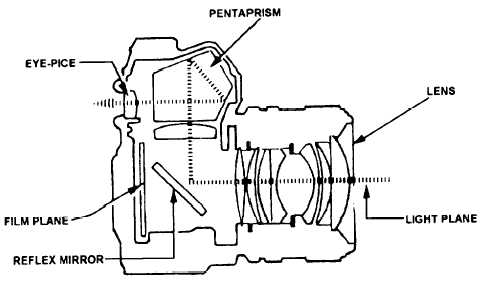Figure 4-4.–Design of a typical SLR camera.
produce negatives that range in size from 35mm to 8x10
inches. You will learn to choose the camera that best
meets the conditions of your assignment and the
customer's photographic requirements.
The number and types of cameras available at an
imaging facility depend primarily on the mission of the
facility. All cameras have common features. Once you
become familiar with the operation of one camera, you
can learn quickly to operate other types. There are three
general categories of cameras: small format, medium
format, and large format.
is reflected to a viewing screen for focusing and
composition. This allows you to see what the lens sees
regardless of the lens focal length or the lens-to-subject
distance. The reflex system is simple and reliable. It has
three main elements: a hinged mirror, a matte focusing
screen, and a five-sided glass prism called a pentaprism
The mirror, in the viewing position, is below the viewing
screen and behind the lens. It is at a 45-degree angle and
projects the image formed by the lens up to the focusing
or viewing screen. The pentaprism reflects the image
from the focusing screen, so you can see it in the camera
eyepiece. Figure 4-4 shows the design of a typical SLR
camera.
SMALL-FORMAT CAMERAS
Cameras that produce negatives smaller than 35mm
are considered small-format cameras. Small-format
cameras are preferable when you need maximum
freedom of movement and a large number of negatives
without reloading the camera. The accessories, lenses,
and flash equipment can be carried easily, and
commonly 36 frames may be taken rapidly without
reloading the film. This type of camera is helpful for
news and action photography where several pictures
must be taken in a short time from various ranges and
under varying light conditions. The primary
disadvantage of small-format cameras is they produce
small negatives. The smaller the negative, the more it
must be enlarged in printing.
When the shutter release is pressed, the mirror
swings up and out of the light path, so the light can reach
the film. It also seals off the viewfinder, so light entering
the eyepiece cannot reach the film. After the film is
exposed, the mirror swings back down, and the image
is visible again in the viewfinder.
CAUTION
The reflex mirror is thin glass coated on the
front with silver, so care must be taken not to
damage it by touching or scratching it. Follow
only the procedures listed in the Planned
Maintenance System (PMS) for cleaning
camera mirrors.
The most popular professional small-format camera
Almost all 35mm cameras have focal-plane
is the 35mm single-lens reflex (SLR). This camera has
shutters. Focal-plane shutters simplify the construction
a mirror in the path of the image formed by the lens that
of the camera and make interchangeable lenses smaller,
4-3



